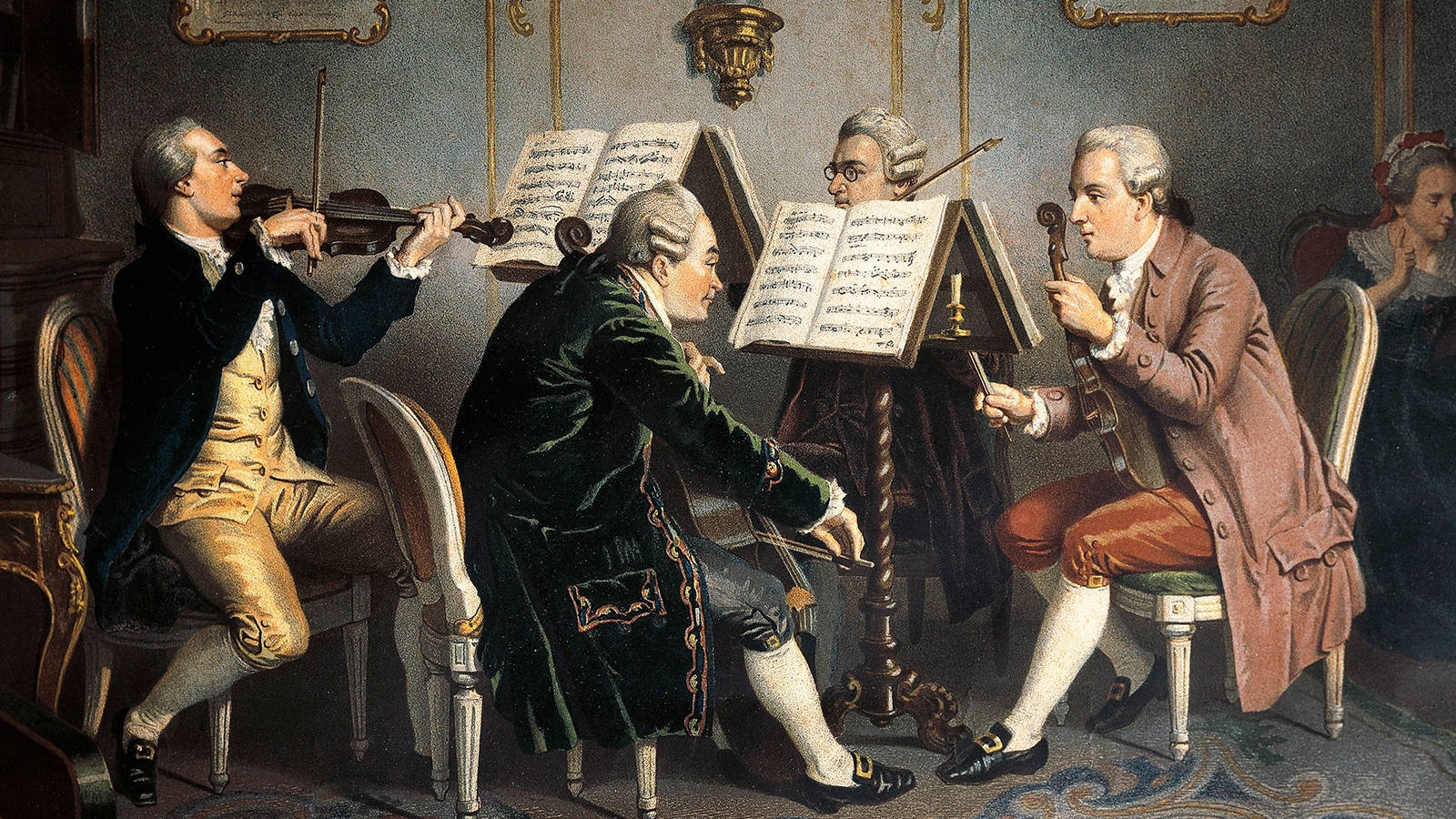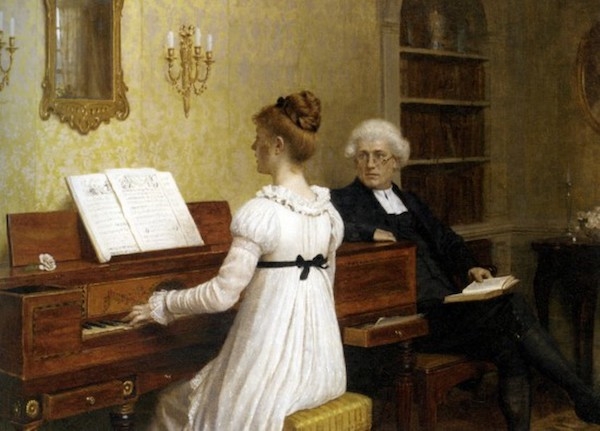Classical Music: Its Origins, the History of Its Emergence, Its Prosperity, and Its Most Prominent Pioneers
If we contemplate this vast universe, we will find that this inhabited ball is music. Every atom of our life includes the element of sound, tone, movement, and rhythm. Only nature is a maestro, while trees, water streams, electricity poles, and birds are musicians. Even the human throat is a resonant musical instrument that releases musical sound vibrations when the ropes rub against each other and hit the strings, so the whole universe is music.
Definition of classical music:
It is a strange type of music that differs from traditional music, and it is written and sung in religious, orchestral, and operatic rituals. It is sometimes called artistic music. It is more open and complex compared to popular music. Classical music includes folk, jazz, and rock music.
There are two types of classical music: Instrumental music and Vocal music.
What is instrumental music?
There are three types of instrumental music:
1. Solo music:
It is performed by one musician on one instrument only, regardless of the type of instrument, and it has common and divergent formations, including sonata.
2. Chamber music:
It is written for a small number of 2-5 players who perform on a range of musical instruments.
3. Orchestral Music:
It is performed in front of a large audience of attendees and spectators and includes a group of musicians, numbering between 50 and 100, who play several musical instruments, including woodwind, string, brass, and percussion.
What is vocal music?
There are four types of vocal music:
1. Songs:
They are called artistic songs and use poems that are predominantly literary and eloquent. The singer is accompanied by an additional musical element called a pianist, especially if the poetry is romantic or about love stories.
2. Choir:
They are songs written and performed by a group of human voices that sound like one, including soprano, alto, bass, and tenor.
The singer may accompany an orchestra with a maestro or a musician playing only one instrument. This type of vocal music is usually written for religious rituals, prayers, and chants.
3. Opera:
It is a different and strange music style that combines instrumental and vocal music with an expressive and comprehensive theatrical performance. The technique of filming dramatic shots is used for a story or a situation, and combines several elements, including: orchestra, individual or solo singing called aria, choir called collective singing, and ballet.
4. Muwashahat:
It is much like opera as the orchestra, choir, and solo singing are used in one place, and muwashahat are often sung for a story or religious hymns.
The Genesis of Classical Music:
Classical music is a purely musical artistic production that has grown, rooted, and sprouted in the traditions and rituals of the West, especially the two types of European peoples: Secular music and religious music. The period between 1750 and 1820 was called the era of classical music, as this music was very popular and embraced by Western musicians and European audiences.
It is worth noting that there are many classical music pieces of European origin written by non-European people. Still, they were soon subjected to changes in their symbols, and improvisation also affected them. However, they were not much affected by improvisation compared to non-European music which was dominated by change and improvisation, and we mention jazz and pop.
The difference between classical music and other types of music is that classical music relies on the performance of symphonies and the fusion of operatic and orchestral music at the same time, and it also needs a huge orchestra led by a maestro and large and exotic instruments, both eastern and western.

We pass into the Middle Ages, as the monks in the churches sang classical music, and the performance was very similar to the orchestral performance, and it was groaning under the weight of the authority of the church and those in charge of the monasteries and the liturgy, so it was restricted to prayers, hymns, and Christian religious rituals. However, in the romantic era, classical music was liberated and came out of the framework of the authority of the Church and religious rituals and became sung in festivals and parties.
The history of the emergence of classical music:
- The Middle Ages or Medieval Period 500-1400 AD.
- The Renaissance Era 1400-1600 AD.
- The Baroque Era 1600-1750 AD.
- Classical Eras 1750-1820 AD.
- The Romantic Era 1804-1910 AD.
- The Modern Era 1890-1930 AD.
- The High Modern Era 1950-1969 AD.
- The postmodern Era from 1930 to the present day.
What is the importance of classical music?
Statistics and international studies have shown that music positively and significantly impacts human psychological and mental health. Also, constantly listening to classical music improves human mood and is an effective treatment against severe and difficult bouts of depression.
In addition to that, we say that a person who constantly listens to classical music is characterized by calmness, sobriety, and balance because it relieves tension resulting from the pressures of contemporary life and reduces the tendency of violence among people, as it increases human intelligence and their ability to remember, as well as gives them space to create, develop their talents, and feel the beauty and taste it.
What are the benefits of classical music?
- It relieves tension and nervous spasm.
- It reduces the human tendency to violence.
- It has a role in reducing suicidal tendencies.
- It makes a person more tolerant and kind and reduces the instinct of hostility or the characteristic of aggression.
- It reduces tantrums.
- It is a real cure for depression.
- It is a tranquilizer.
- It is a mood enhancer.
- It increases the secretion of happiness hormones.
- It gives a person the ability to control their emotions.
- It makes a person more delicate and sensitive.
- A person becomes more beautiful when they listen to classical music.
- It increases mental and emotional intelligence.
- A person gains strong emotional energy and becomes more sensitive to music, melody, and words.
- It adjusts the body's rhythm and keeps it balanced.
- It makes people more open and civilized.
- It enables a person to carry out their tasks more accurately and quickly.
- It creates a healthy and calm atmosphere at home.
- It gives a feeling of relaxation and the ability to sleep.
- It develops the human capacity for holistic and empathetic
- It promotes creative tendencies among its listeners and tasters.
- It pushes a person to search for beauty in all its forms and manifestations.
- It prompts a person to research and dive into the world of classical music and delve deeper into the mysteries and secrets of its beauty.
- It elevates a person to higher and more beautiful levels.
- It opens brain cells, improves memory, and increases intelligence and creativity.
- It increases a person's capacity for true love, giving, and friendship.
The rise of Classical music:
In the middle of the eighteenth century, the European region turned to a new path in literature, art, architecture, and culture, and this path or current was known as Classicism.
The term Classicism included all forms of art, including music, which had a great influence on it. Classicism was an attempt to simulate antiquity, such as the experience of the ancient Greeks, which was later called Greek Classicism.
The musical period witnessed a remarkable development in the form of the sonata. A sonata is a set of music principles and structural foundations that harmonize between the classical preference for melodic materials and harmonic development. Also, the sonata continued to flourish as another form of solo music and chamber music. Later, the string quartet became a prominent form of music in the classical era.
The most important characteristic of the classical period is that the music in it took another form that distinguishes it from others in that period, which is that the theme was composed of contradictory shapes, phrases, and rhythms. This phrase is brief and placed in the form of four strips that take a longitudinal form, and it is characterized as homogeneous in shape and texture.
Major pioneers of classical music:
- Franz Danzi 1763-1826 AD.
- Domenico Cimarosa 1749-1801 AD.
- Luigi Cherubini 1760-1842 AD.
- Giuseppe Bono 1711-1788 AD.
- Luigi Boccherini 1743-1805 AD.
- William Billings 1746-1800 AD.
- Ludwig van Beethoven 1770-1827 AD.
- Juan Crisóstomo de Arriaga 1806-1826 AD.
Classical Music in the Baroque Era:
In the period between 1600-1750 AD, Baroque music was distinguished by its decorations and drawings and influenced by architecture and mosaics. New musical forms appeared, and classical music styles multiplied before Baroque music attained the title of Classicism. Also, the so-called symphonies, operas, fugues, and sonatas appeared, and the complex accompanying the human voice with music was eliminated. Moreover, liberation from the written song with the music has become the tendency to produce pure music without any words. The focus on the melody is greater than the word.
Classical Music in the Romantic Era:

In the period extending between 1820-1900, the so-called Romantic music appeared, and it was based on the developments produced by the classical era, which gave music another form and a different dimension. In this era, the need for musicians increased to produce musical works of a romantic nature that approach humanity and simulate reality and are inspired by individual feelings, painful love stories, and charming nature. Some of the most important musicians of the Romantic era are Verdi, Strauss, Wagner, and Tchaikovsky.
Classical music in the twentieth century:
With the advent of the twentieth century with all its achievements, and with the advent of the information and industrial revolution, the whole world changed, and the forms of art, including music, changed with it. The number of instruments increased, the invention grew, the number of universities increased, the science of music took root, and classical music flourished as a different style characterized by beauty, privacy, and magic. Also, electronic instruments replaced wooden instruments, and learning and communicating via the Internet facilitated communication and the performance of musical work with professionalism and high quality.
In conclusion:
Classical music is a strange but pleasant genre that is familiar to the ear and comfortable to hear in all its forms, whether in opera, orchestra, or muwashahat. Classical music tried to change the forms of music and succeeded in that, and attracted the minds of listeners before their hearts. It became sung in wedding halls, festivals, and parties after it was confined to the scope of churches, prayers, and hymns.